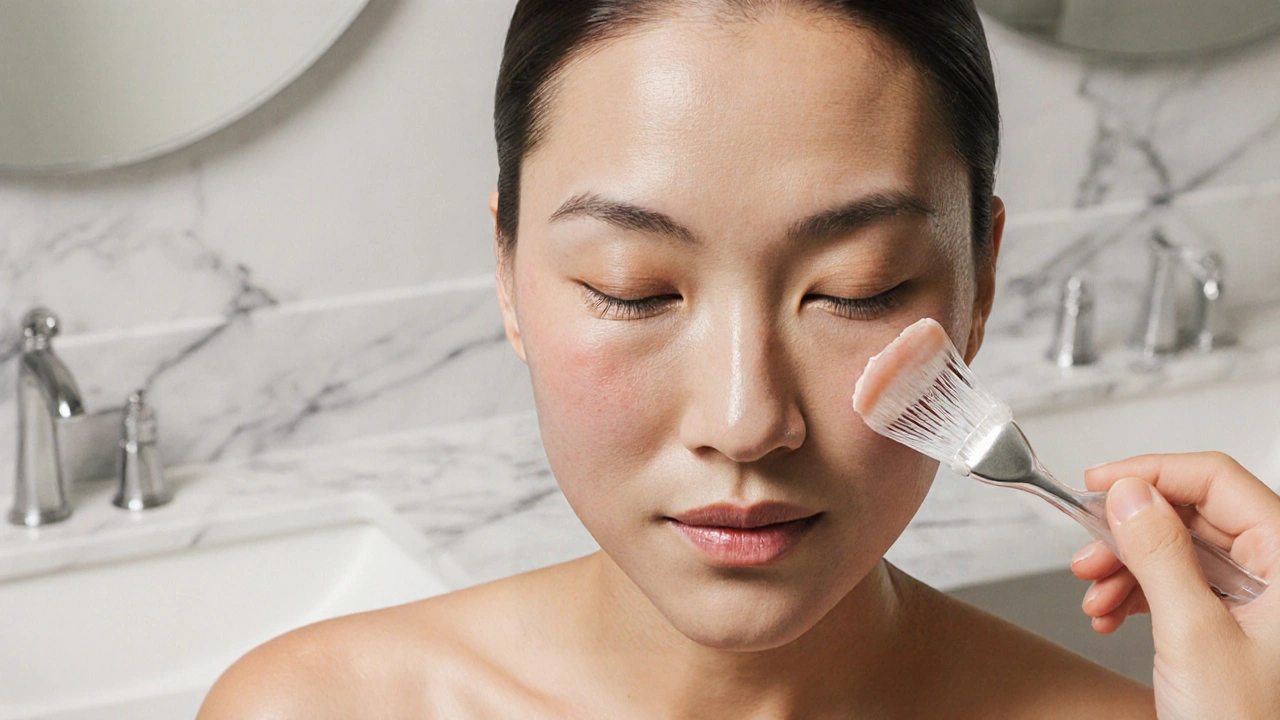Explore how chemical peels reduce wrinkles, boost collagen, and rejuvenate skin, with tips on types, safety, and after‑care.
Read MoreChemical Peels: A Practical Overview
When working with chemical peels, a controlled application of acid solutions that remove outer skin layers to improve texture and tone. Also known as skin resurfacing, they are a staple in cosmetic dermatology for tackling fine lines, hyperpigmentation, and acne scarring. Glycolic acid is the most common superficial agent, offering quick turnover with minimal downtime. The process works because the acid breaks down keratin bonds, prompting the skin to regenerate. This regeneration allows newer, healthier cells to surface, which is why TCA peel a medium‑depth option using trichloroacetic acid can reach deeper imperfections while still being safe when performed by a qualified professional. In short, chemical peels encompass a range of treatments, require proper pre‑care, and deliver lasting results when matched to the right skin type.
Choosing the Right Peel and Preparing for Success
Choosing a peel involves matching the acid strength to your skin concerns – a glycolic acid peel covers fine lines and mild discoloration, while a TCA peel targets deeper wrinkles and more pronounced melasma. The subject‑predicate‑object relationships are clear: chemical peels encompass skin resurfacing, skin resurfacing requires appropriate acid choice, and appropriate acid choice influences recovery time. Before any treatment, a dermatologist will assess your medical history, current medications (like the many listed in our collection – from bisoprolol to imatinib), and skin sensitivity. This aligns with the broader theme of our resource hub, where we compare medication effects, manage side‑effects, and guide safe usage. Understanding drug interactions is crucial, as some medications (e.g., retinoids or certain antibiotics) can increase peel sensitivity, mirroring the caution we advise in posts about eplerenone & smoking or Risperdal alternatives.
After the peel, post‑care mirrors the advice we give for other skin‑related topics: gentle cleansing, broad‑spectrum sunscreen, and avoiding irritants. Healing timelines differ – superficial peels may heal within a day, while medium peels can take a week. Tracking progress and noting any unexpected reactions is as important as monitoring side‑effects of any medication, a principle echoed across our articles on pain relievers, antivirals, and weight‑loss drugs. By integrating these practices, you ensure optimal results and reduce complications.
Below you’ll find a curated selection of articles that dive deeper into related health areas – drug comparisons, dosage tips, and safety guides – all of which can help you make informed decisions about your skin care regimen and overall wellbeing. Explore the collection to see how medication management, lifestyle factors, and cosmetic procedures intersect, giving you a well‑rounded perspective before you book your next appointment.
